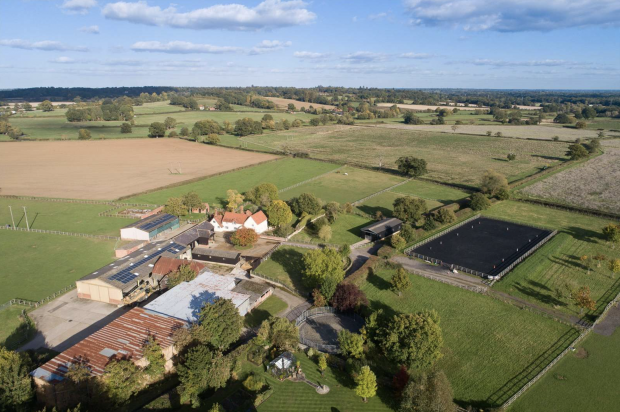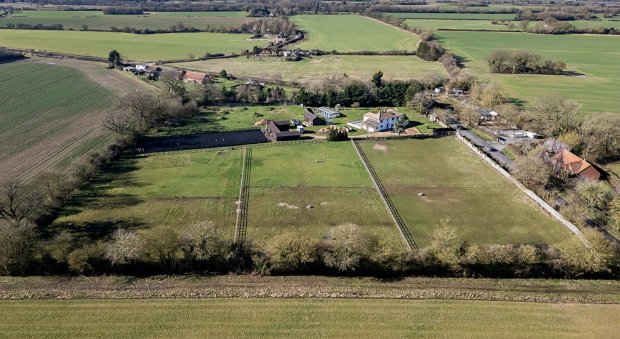“There’s always demand for equestrian properties, even when the rest of the market is quiet,” says John Little, of Hamptons International in Malmesbury
Indeed, the size of equestrian waiting lists across the country remains healthy. Chris Yates FRICS, of Bradleys Marine and Country in the West Country, reports that the market in the early months of 2005 looks rosier than it did in the last six months of 2004.
This is likely to be due to committed buyers and realistic vendors, who “while wanting the maximum achievable price, are accepting professional and informed advice based on the current conditions. They furthermore recognise that they must present their property in the best possible light when it comes on to the market”.
Prices, however, seem to have stopped climbing to settle roughly on a par with last year. The Horse & Hound property index, which tracks activity in the equestrian homes sector through the advertisements placed in the magazine, suggests that the market is remarkably flat.
Prices have grown by about 1.1% year-on-year, which is to say that they are level or even slightly lower than last year in real terms. But scratch below the surface of average figures and you’ll notice that there are fewer properties at the top end of the market than in 2004, and that there has been a shift from the lower mid-end towards the upper mid-end.
There are many reasons for the shortage of premium equestrian homes. Potential vendors are only prepared to put their house up for sale if it can fetch a fair amount of money, and will be ready to pull it off the market if it looks like it won’t.
“People say: ‘We want to get £1.5m for it.’ If they don’t, they’re not going to move,” says Robert Fanshawe of Knight Frank.
Further up the ladder, rumour has it that search agents are muscling in, as affluent buyers offload the hassle of sifting the wheat from the chaff in the quest to find the right place. At the same time, selling agents are marketing several top properties privately, as Bidwells did with a number of Newmarket sales over the past 12 months.
The impact of these two factors means that some of the best estates are snapped up before they reach the open market.
“The top stuff, very nice houses with big equestrian facilities at £3m-plus, is going very well, but some are sold privately,” says Fanshawe, who confirms that at this level, “there are more buyers than sellers”.
If top-notch properties are scarce, availability in the lower mid-market range has plunged below all expectations. Last spring, one in four properties advertised in this magazine cost between £250,000 and £500,000. Now, you would be hard pushed to find one every 10 properties. Homes in that price bracket seem to have vanished from estate agents’ books.
“There’s nothing at that level,” confirms Richard Nocton of Woolley & Wallis.
Baker thinks that the shortage of equestrian homes in this range is a consequence of the overall rise in prices during the past few years. He only has to look at his area, the West Country, to see that equestrian property values have risen dramatically.
“Right now, it would be difficult to find anything in the £250,000 to £500,000 price range,” he says.
Nocton, however, thinks there is also another issue at play. In his view, uncertainty over the Single Payment Scheme — which will replace existing direct subsidies from 2005 — is deterring farmers from selling.
“We find that lots of properties go from agricultural to equestrian. Now, one particular source for the equestrian market has been temporarily suspended: that is the farmhouse and 15-30 acres. The majority of farmers have held off selling while they establish their entitlements for the scheme,” he says.
“The Single Payment Scheme would certainly account for a small farm bungalow where you’d have a farmer who would retire and sell. Now he’ll wait to see what level of subsidy he’s getting. This has an impact at every level but particularly at the lower price range. People who are buying and selling at £750,000-plus aren’t going to be worried about subsidies.”
Both theories find confirmation in the marked rise of property priced between £500,000 to £1m, which now accounts for 56% of the advertisements placed in Horse & Hound (against about 43% last year). About one third of the properties available for sale is in the upper end of the £500,000 to £750,000 price bracket.
The Horse & Hound index shows that the typical equestrian home now costs £746,796 and comes with a four-bedroom house and three or four stables set in about five acres — or slightly more land for properties set outside the Home Counties.
“Smaller yards at around £700,000-£800,000 are in demand. The majority of properties we’re selling are in that region,” says Baker.
“We could sell properties in the region of £750,000-£1.25million many times over,” agrees Little, who reports that he “never has enough” of these houses.
Despite the lively demand, “the balance of power still remains with the buyers”, as Nocton puts it. This makes them discerning.
“What doesn’t sell well is property that’s overpriced, often as a result of vendors having spent considerable sums on kitting out equestrian facilities,” explains Jim Bryant of Bidwells, who also laments a lack of attractive family homes with land and modest facilities.
A good-quality yard at the right price usually helps clinch a sale. “The key to selling quickly this year is to ensure that the yards are kept clean and the stables are in full working condition, with all the necessary maintenance completed before the property is offered for sale,” says Baker.
People look for good stabling, plenty of sound outbuildings, and flat, dry, well-drained land. Indoor schools and horsewalkers remain popular, but Little also reports an increase in requests for less obvious facilities, such as equine swimming pools and stick-and-ball fields.
If anything, it’s the house that takes the back seat, as often happens with equestrian properties. According to Little, “many buyers are looking for an inexpensive main house that will keep the running costs down”.
It is hard to guess what the future has in store for the market in the coming months. The analysts’ rollercoaster, where rumours of impending property gloom and reports of speedy recovery follow one another incessantly, mirrors the hugely diverging views among rural estate agents.
David Rumsey of Pelhams thinks the government will not allow the wider market to deteriorate any further, to prevent a decline in stamp duty revenues. Nocton believes a number of reasonably-priced farms and smallholdings will be put up for sale this summer, as doubts over the workings of the Single Payment Scheme are dissipated. Greater choice will make cash buyers even more selective.
But, says Nocton: “The number of sales will increase as economic conditions improve.”
Fanshawe, by contrast, doesn’t hold much faith in the economic outlook over the next three years and is “slightly anxious” because he has noticed a general tightening of the belt at high street level. This leads him to believe that many vendors will continue to sit on their hands.
He may be comforted in the knowledge that the perennial mantra of estate agents — which says that a good property in a good location at the correct price always sells well — looks set to hold true once again.
Search for your perfect equestrian property >>
|
||
 |
||

 Get up to 19 issues FREE
Get up to 19 issues FREE TO SUBSCRIBE
TO SUBSCRIBE 



